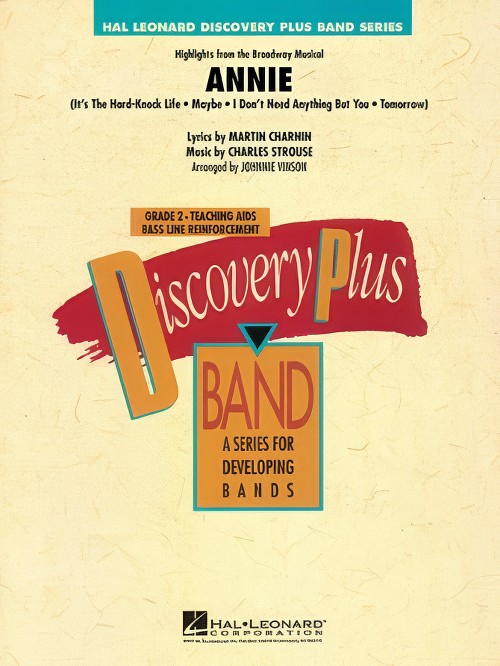Results
-
 £149.40
£149.40Sommernatt ved fjorden - Ketil Bjørnstad
"By the Fjord" is written by the Norwegian composer Kjetil Bjrnstad and is the most famous song from the musical work "Leve Patagonia" which was published in 1978. The work is written as a modern suite about the Oslo Bohemians Hans Jaeger and OdaLasson sitting in a pram on the fjord a summer night. Odas sister sees the couple on the sea from her window and tells us the story.Kjetil Bjrnstad wrote "By the Fjord" in his house outside Tvedestrand early spring 1978. He was initially notfully satisfied and considered disposing it. The beautiful music has luckily made the song a classic in Norwegian music.To the conductorThis arrangement can be used with both vocal andinstrumental soloist. Its always a challenge toarrange songs with many verses that tells a story if it is to be played by an instrumental soloist instead of a singer. Because of that, please cut the repeats if it's performed without lyrics.Solo-parts included in the set: Vocal Flute Altosax Flugelhorn Euphonium - Trombone
Estimated dispatch 7-14 working days
-
 £149.40
£149.40Stjernen og Rosa - John Philip Hannevik
The Star and a Rose is a big-scale Christmas piece for band, featuring four seasonal chorales.The first is a Gregorian-like chant Hodie Christus natus est.In this section of the piece, a soloist can be placed away from the band, maybe on a gallery. The soloist can be a tenor instrument, maybe trombone, or you can feature a vocal soloist.After this, the music leads us on to the old German Christmas chorale Lo, how a rose e'er blooming. This song is given a fairly rhythmical treatment, but make sure that the melody is presented in a cantabile style.An interlude follows, before the piece presents one of the most used and loved Scandinavian Christmas chorales, Mitt hjerte alltid vanker (My Heart will always wander), composed by the Danish bishop Hans Adolph Brorson around 1732. This song is building towards a climax, before the solo horn brings it all down to the Stable view described in the lyrics.Then comes a transition that brings us in to the final section of the piece, which presents the international Christmas Carol Adeste Fideles. As many will notice, I have borrowed a section from David Wilcocks majestic harmonization towards the end.The title of the piece has its background form the lyrics in My heart will always wander, where the text speaks about the stars in the sky. But also in the latin text for Adeste Fideles:Stella duce, Magi, Christum adorantesThe Rose is of course from the lyrics in the chorale Lo, how a Rose.
Estimated dispatch 7-14 working days
-
 £64.99
£64.99Annie, Highlights from (Concert Band - Score and Parts) - Charnin & Strouse - Vinson, Johnnie
Featuring a wealth of catchy tunes and a heart-warming story, Annie has become one of the most popular Broadway musicals of all time. Here is a great-sounding medley for young bands by Johnnie Vinson that includes: It's a Hard-Knock Life, I Don't Need Anything but You, Maybe and of course, Tomorrow.
Estimated dispatch 7-14 working days
-
 £59.40
£59.40Colonel Bogey (Concert Band) - Alford, Kenneth J.
A wonderful new edition of the most famous of all British marches, it's perfect for concert or contest performances. Skillfully edited and arranged by march expert Andrew Glover.
Estimated dispatch 7-14 working days
-
 £62.37
£62.37El Relicario
One of the most famous and best loved paso dobles ever written. Presented here in a new setting for band that reveals all of its fiery rhythms and sweeping Spanish melodies. .
Estimated dispatch 7-14 working days
-
 £49.50
£49.50Step By Step (Concert Band - Score and Parts)
An impressive overture by one of the most popular composers of music for young bands. Perfect as a concert or contest piece, it's fresh melodies and tasy scoring makes this a 'can't miss' anytime it is performed.
Estimated dispatch 7-14 working days
-
 £74.99
£74.99El Relicario
One of the most famous and best loved paso dobles ever written. Presented here in a new setting for band that reveals all of its fiery rhythms and sweeping Spanish melodies.
Estimated dispatch 7-14 working days
-
 £83.00
£83.00RAF March Past - Walford Davies
This march, with its rousing and sweeping melodies, is one of the most attractive of all military marches. It is a colorful and spirited work with immediate appeal. Duration: ca. 3 minutes.
Estimated dispatch 7-14 working days
-
 £64.99
£64.99Highlights From Annie - Charles Strouse
Featuring a wealth of catchy tunes and a heart-warming story, Annie has become one of the most popular Broadway musicals of all time. Here is a great-sounding medley for young bands by Johnnie Vinson that includes: It's a Hard-Knock Life, I Don't Need Anything but You, Maybe and of course, Tomorrow.
Estimated dispatch 7-14 working days
-
 £209.99
£209.99Machu Picchu - Satoshi Yagisawa
Commissioned for the Ensemble Liberte Wind Orchestra, Kawaguchi City, 30th Anniversary ConcertExplaining the significance of Machu Picchu begins with remembering the Incan empire at its zenith, and its tragic encounter with the Spanish conquistadors. The great 16th century empire that unified most of Andean South America had as its capital the golden city of Cuzco. Irresistible to Francisco Pizarro, while stripping the city of massive quantities of gold, in 1533 he also destroyed Cuzco's Sun Temple, shrine of the founding deity of the Incan civilization.While that act symbolized the end of the great empire, 378 years later an archeologist from Yale University, Hiram Bingham, rediscovered "Machu Picchu", a glorious mountaintop Incan city that had escaped the attention of the invaders. At the central high point of the city stands its most important shrine, the Intihuatana, or "hitching post of the sun", a column of stone rising from a block of granite the size of a grand piano, where a priest would "tie the sun to the stone" at winter solstice to insure its seasonal return. Finding the last remaining Sun Temple of a great city inspired the belief that perhaps the royal lineage stole away to this holy place during Pizarro's conquest.After considering these remarkable ideas I wished to musically describe that magnificent citadel and trace some of the mysteries sealed in Machu Picchu's past. Three principal ideas dominate the piece: 1) the shimmering golden city of Cuzco set in the dramatic scenery of the Andes, 2) the destructiveness of violent invasion, and 3) the re-emergence of Incan glory as the City in the Sky again reached for the sun.(Satoshi Yagisawa)
Estimated dispatch 7-14 working days
